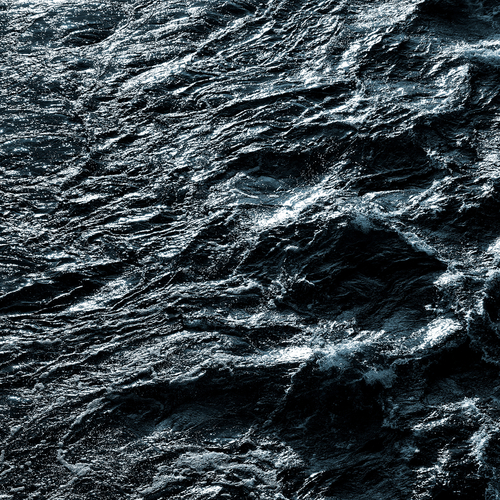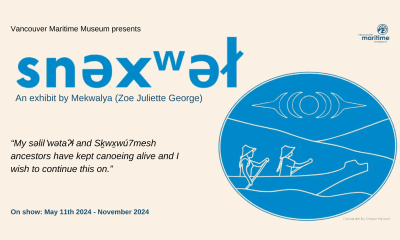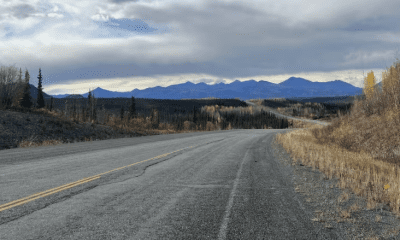Headline
Seabed of new jet search zone mostly flat with 1 trench, mostly good news for wreckage hunt
WELLINGTON, New Zealand – Two miles beneath the sea surface where satellites and planes are looking for debris from the missing Malaysian jet, the ocean floor is cold, dark, covered in a squishy muck of dead plankton and – in a potential break for the search – mostly flat. The troubling exception is a steep, rocky drop ending in a deep trench.
The seafloor in this swath of the Indian Ocean is dominated by a substantial underwater plateau known as Broken Ridge, where the geography would probably not hinder efforts to find the main body of the jet that disappeared with 239 people on board three weeks ago, according to seabed experts who have studied the area.
Australian officials on Friday moved the search to an area 1,100 kilometres (680 miles) to the northeast of a previous zone as the mystery of Malaysia Airlines Flight 370 continued to confound. There is no guarantee that the jet crashed into the new search area. Planes that have searched it for two days have spotted objects of various colours and sizes, but none of the items scooped by ships has been confirmed to be related to the plane.
The zone is huge: about 319,000 square kilometres (123,000 square miles), roughly the size of Poland or New Mexico. But it is closer to land than the previous search zone, its weather is much more hospitable – and Broken Ridge sounds a lot craggier than it really is.
And the deepest part is believed to be 5,800 metres (19,000 feet), within the range of American black box ping locators on an Australian ship leaving Sunday for the area and expected to arrive in three or four days.
Formed about 100 million years ago by volcanic activity, the ridge was once above water. Pulled under by the spreading of the ocean floor, now it is more like a large underwater plain, gently sloping from as shallow as about 800 metres (2,625 feet) to about 3,000 metres (9,843 feet) deep. It got its name because long ago the movement of the Earth’s tectonic plates separated it from another plateau, which now sits about 2,500 kilometres (1,550 miles) to the southwest.
Much of Broken Ridge is covered in a sediment called foraminiferal ooze, made of plankton that died, settled and was compacted by the tremendous pressure from the water above.
“Think like it’s been snowing there for tens of millions of years,” said William Sager, a professor of marine geophysics at the University of Houston in Texas.
Like snow, the layer of microscopic plankton shells tends to smooth out any rises or falls in the underlying rock. In places, the layer is up to 1 kilometre (half a mile) deep.
But if the fuselage of the Boeing 777 did fall on to Broken Ridge, it would not sink much into the muck.
“The surface would be soft, it would squeeze between your toes, but it’s not so soft that you would disappear like snow,” Sager said. “Something big like pieces of an airplane, it’s going to be sitting on the surface.”
Searchers will be hoping that if the latest area turns out to be where the plane crashed – and that remains educated guesswork until searchers can put their hands on aerial debris sightings and check what it is – the fuselage did not go down on the southern edge of Broken Ridge.
That’s where the ocean floor drops precipitously – more than 4 kilometres (2 1/2 miles) in places, according to Robin Beaman, a marine geologist at Australia’s James Cook University. It’s not a sheer cliff, more like a very steep hill that a car would struggle to drive up. At the bottom of this escarpment is the narrow Diamantina trench, which measurements put as deep at 5,800 metres (19,000 feet), though no one is sure of its greatest depth because it has never been precisely mapped.
“Let’s hope the wreck debris has not landed over this escarpment – it’s a long way to the bottom,” Beaman said.
The Diamantina trench, named after an Australian navy vessel, is one of the deeper sections of the parts of the oceans that surround Antarctica, according to Mike Coffin, the executive director of the Institute for Marine and Antarctic Studies at Australia’s University of Tasmania.
The trench’s rocky crags and crannies would make it difficult for ships using instruments like side-scanning sonar or multi-beam echo sounders to distinguish any debris from the crevices.
Searchers will especially be hoping to locate the jet’s two “black boxes,” which recorded sounds in the cockpit and data on the plane’s performance and flight path that could help reconstruct why it diverted sharply west from its overnight flight from Kuala Lumpur, Malaysia, to Beijing on March 8. The black boxes were designed to emit locator pings for at least 30 days, and are projected to lose battery power – and thus their pings – by mid-April.
The pinger can be heard as far as 2 1/2 miles away, but the distance can vary widely, depending on the state of the sea and the wreckage location, said Joseph Kolly, director of research and engineering for the U.S. National Transportation Safety Board. Black boxes can get buried or muffled by other wreckage, and thermoclines, which are layers of water with great variations in temperature, can refract the signal, he said.
The sediment on Broken Ridge is unlikely to inhibit the ping _ but on the escarpment or in the trench, rocks could scatter the sound, making it harder to detect, according to Mike Haberman, a research scientist specializing in acoustics at the University of Texas, Austin.
To pinpoint the ping they hear from the surface, searchers likely will run a submersible equipped with sonar several hundred feet above the ocean floor. The unmanned underwater vehicle will putter along at a slow jog, able to “see” objects on the floor that may seem out of place. But its vision is limited – in a day it could cover an area only about the size of Manhattan, Sager said.
The observations stored in the vehicle’s memory can be accessed only by bringing it to the surface.
Under the best conditions, to survey the entire new search area could take between three months and up to nearly two years, depending on the quality of data needed to identify the debris, according to calculations by David T. Sandwell, a professor of geophysics who specializes in seafloor mapping at the Scripps Institution of Oceanography in San Diego.
Because it is such a painstaking – and expensive – process, most mapping has been focused on things that people consider useful, like underwater shipping hazards and potential oil deposits. With nothing much to interest people in the this part of the Indian Ocean, the maps tend to follow features like the volcanically active mid-ocean ridges, leaving big blank spaces in between.
There are 80-kilometre (50-mile) -wide strips of the search area where no shipboard measurements have been taken and scientists use less detailed satellite measurements and educated guesswork to depict what the floor actually looks like.
Precisely what the seafloor looks like in detail in the area of the new search is another in a long line of Flight 370 mysteries.
___
Pritchard reported from Los Angeles. Associated Press writer Matthew Pennington in Washington contributed to this report.






















